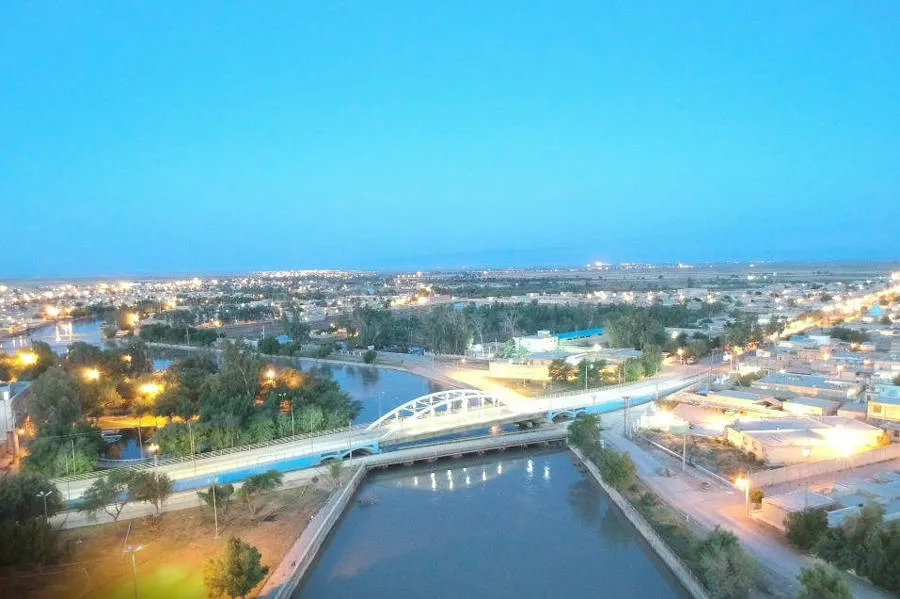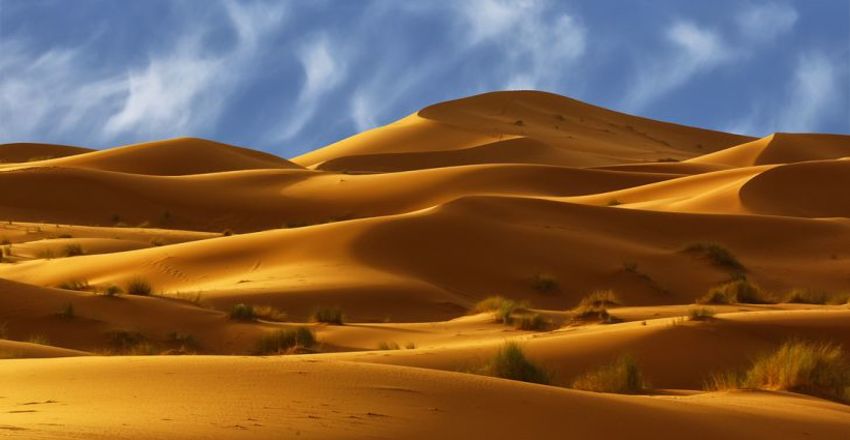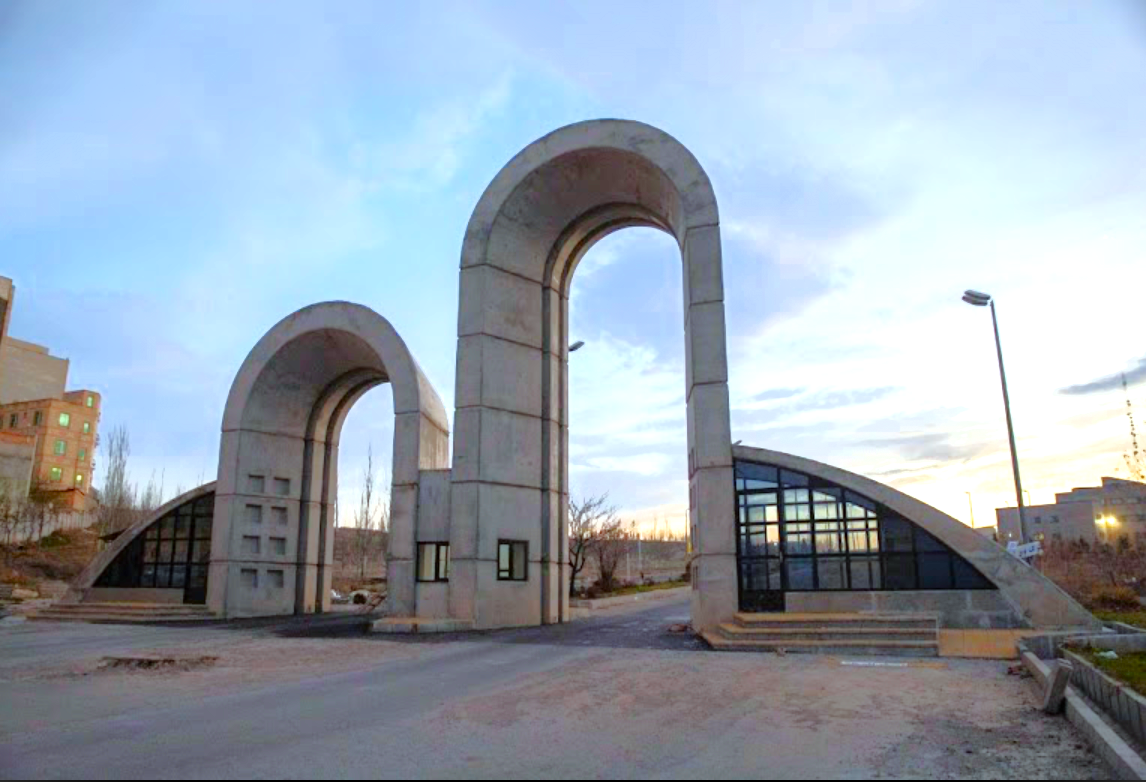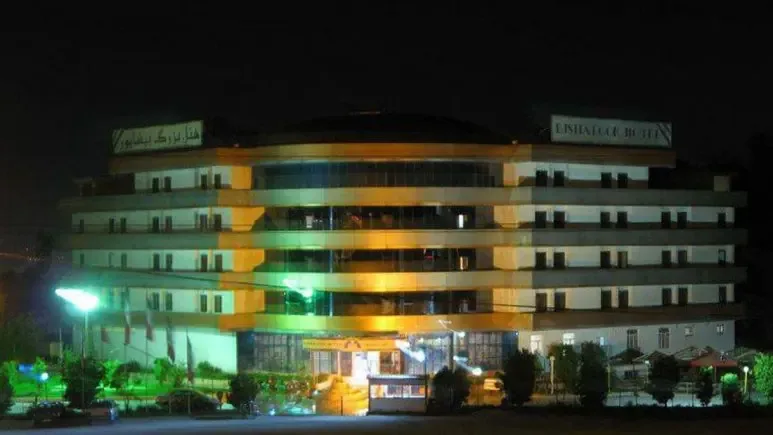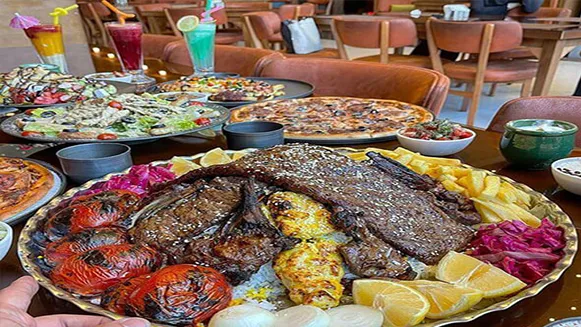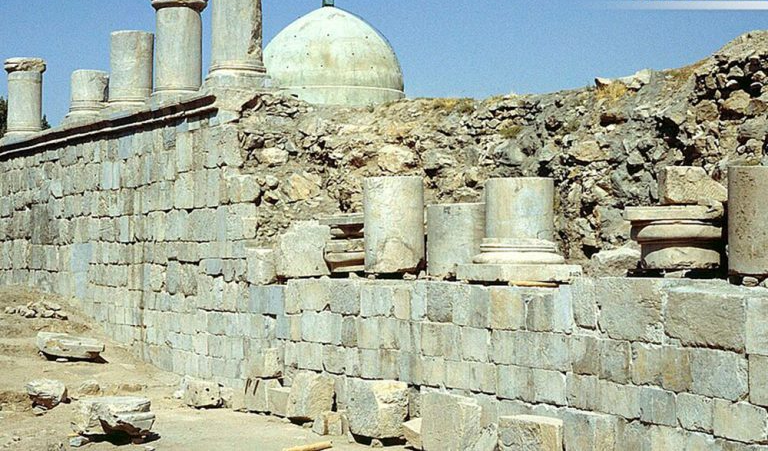Naqsh-e Jahan Square : naqsh-e jahan square facts
Imam Square, also known as Naqsh-e Jahan Square, is one of the most beautiful attractions in Isfahan. In fact, this square is a gathering place for many ancient structures in the city. Throughout its existence, Imam Square has witnessed numerous rises and falls under different rulers, sometimes enduring neglect during certain periods of history; however, today it captivates the hearts of enthusiasts worldwide.
The inclusion of this square in the UNESCO World Heritage List reflects the significance of this area. When visiting Isfahan, you can spend a considerable amount of time in this beautiful square, enjoying the view of historical buildings and its scenic surroundings.
Gulf City Pedia delves into the historical attractions of Imam Square in this article. Join us as we explore the unique features of this historical square for you.
What you will read in this article:
About Imam Square
History of Imam Square
Where is Imam Square located?
Attractions around Imam Square
Things to do in Imam Square
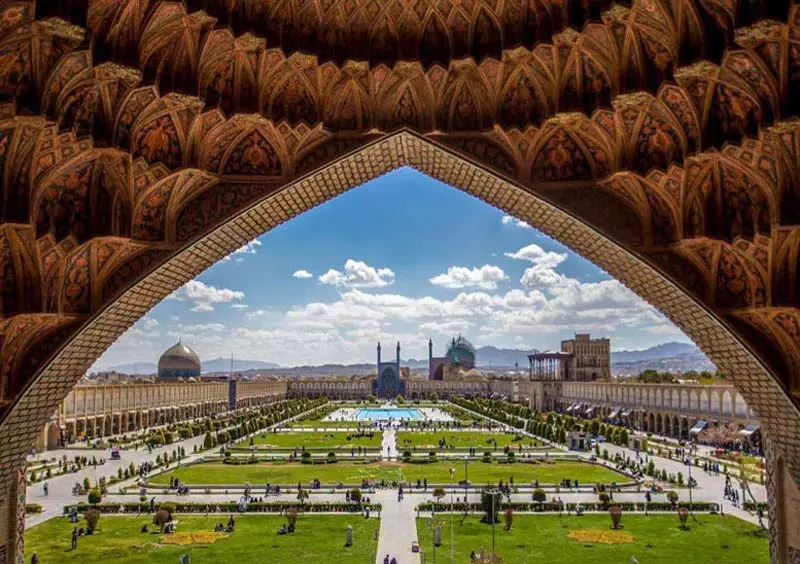
About Imam Square
Imam Square in Isfahan is a prominent historical complex in Iran and the world. This beautiful square annually welcomes numerous tourists eager to explore its historical attractions and admire the beauty it holds. Formerly known as Shah Square before the revolution, its name was changed to Imam Square afterward. Throughout history, this square has been referred to by various names such as Grand Square, Main Square, New Square, Palace Square, and Royal Square.
Before the Safavid era, a beautiful garden named “Naqsh-e Jahan” existed in the location of the square. The name was inspired by a city in Azerbaijan, now known as Nakhchivan. Hamdollah Mostowfi describes this ancient city in his travelogue: Imam Square is located in the northern part of Isfahan, at the heart of the city’s historical complex, once the seat of Safavid rulers. The most glorious period in the history of this square dates back to the reign of Shah Abbas Safavi. Upon transferring the capital from Qazvin to Isfahan, Shah Abbas constructed historical buildings in this square, contributing to its economic prosperity and the expansion of its markets. The newly built square was then named “New Square” during this time.
Later, as the square expanded further during the reign of Shah Abbas II, its name was changed from New Square to Naqsh-e Jahan. The design of this square was inspired by the ancient Atiq Square in Isfahan.
The length of Imam Square exceeds 500 meters, with a width reaching 160 meters. Surrounding the square, 200 chambers on two floors are covered, and four valuable historical buildings showcase themselves in different parts of the square. In the past, protective arcades were built around the square to safeguard the structures, evolving into the present-day chambers over time.
Imam Square is of great interest to enthusiasts worldwide. On February 8, 1955, this grand historical complex was registered in the National Heritage List of Iran. Additionally, in May 1979, it became the first Iranian site to be inscribed on the UNESCO World Heritage List.
History of Imam Square
Before the rise of the Safavid government, a large garden existed in the location of Imam Square. In the central part of the square, known as “Dare Kooshk,” military structures from the Timurid and Aq Qoyunlu periods were present. This western section of today’s square is where the Ali Qapu Palace stands now. Since the Seljuk era, the square served as a venue for national celebrations such as Nowruz (New Year) and executions. During the Safavid era, with the capital moving from Qazvin to Isfahan, the era of glory for this square began, and its surroundings became home to governmental buildings and the royal palace.
Shah Abbas Safavi initiated the establishment of the initial structure of this square with the goal of expanding the city towards its southern part, along the Zayandeh River. Skilled architects like Mohammad Reza and Ali Akbar Isfahani were employed for this purpose. The design and construction of this square and its historical buildings were inspired by the Iranian square architecture, with notable examples including Atiq Square in Isfahan, Amir Chakhmaq Square in Yazd, Shah Square in Qazvin, and Sahib Abad Square in Qazvin.
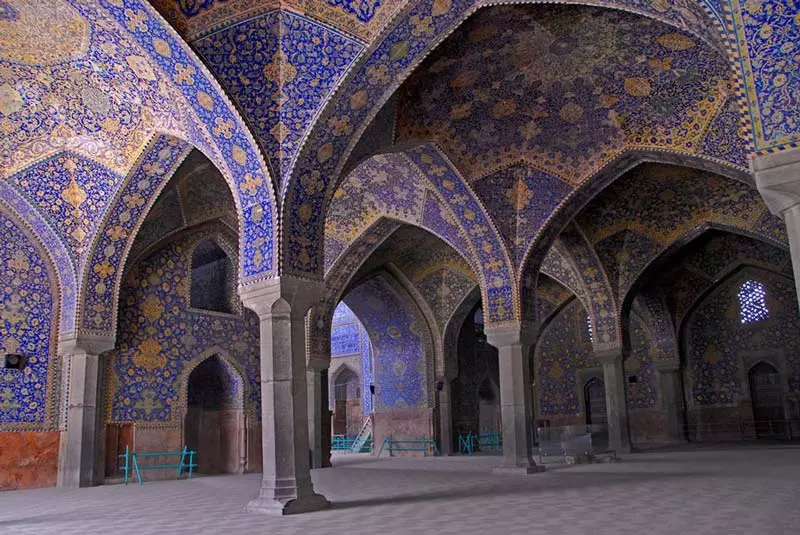
Notable artworks incorporated into the structures of this square include an inscription by Ali Reza Abbasi located above the entrance of Imam Mosque, praising Shah Abbas I. Another inscription on the entrance of Jameh Mosque, engraved in the script of Mohammad Reza Emami, displays the names of prominent architects involved in this project.
Construction of Imam Square
The foundation of the present-day Imam Square was laid in the year 1011 AH (approximately 1602 CE), and gradually, construction of the square and its buildings continued until 1025 AH (approximately 1616 CE). The decoration work on the mosque and structures commenced in 1025 AH and continued until the rule of two successors of Shah Abbas.
Many parts of the Naghareh Khaneh building were lost due to the neglect of the Qajar rulers. During the reign of the last Safavid kings, Shah Suleiman and Shah Sultan Hussein, Imam Square lost its grandeur, and the flowing waters in the channels became turbid and stagnant, and the trees dried up. This trend of destruction intensified during the invasion of the Afghans into Isfahan and continued until the Qajar era. Due to the negligence of the Qajar rulers, significant portions of the Naghareh Khaneh building were lost. With the change of the capital from Isfahan, the square did not receive much attention.
During the Pahlavi era, Reza Khan initiated the reconstruction of historical buildings and surrounding chambers of Naqsh-e Jahan. Economic prosperity returned to the Naqsh-e Jahan market during Reza Khan’s reign. During his era, the square was registered in the list of historical monuments of Iran. From that time until today, this grand historical heritage in the square has been preserved. In recent years, the construction of the Si-o-Seh Pol Bridge near Imam Square led to the demolition of two floors of the bridge to protect the cultural landscape of the square.
Polo in Imam Square
Imam Square remains one of the largest squares globally, and according to foreign travelers, its beauty is beyond description. In the past, it served as the venue for royal celebrations, polo games, military parades, Friday markets, and numerous performances, illuminating the entire square. For ordinary people, the interior of Imam Square was the best place for leisure and shopping. The stone gates of the polo ground, known as Chogan, have also survived in this square, being the oldest polo gates in the world. Foreign polo fields have imitated the design of Chogan fields based on Naqsh-e Jahan Square.
Imam Square is currently undergoing the construction of a large Islamic museum on its upper floor. Upon completion, this area will become the largest center for acquainting people with Islamic culture. Imam Square in Isfahan continues to be the largest political, religious, economic, tourist, and recreational hub in the city. For a detailed account of foreign travelers’ descriptions, you can read it on “Koojaro.”
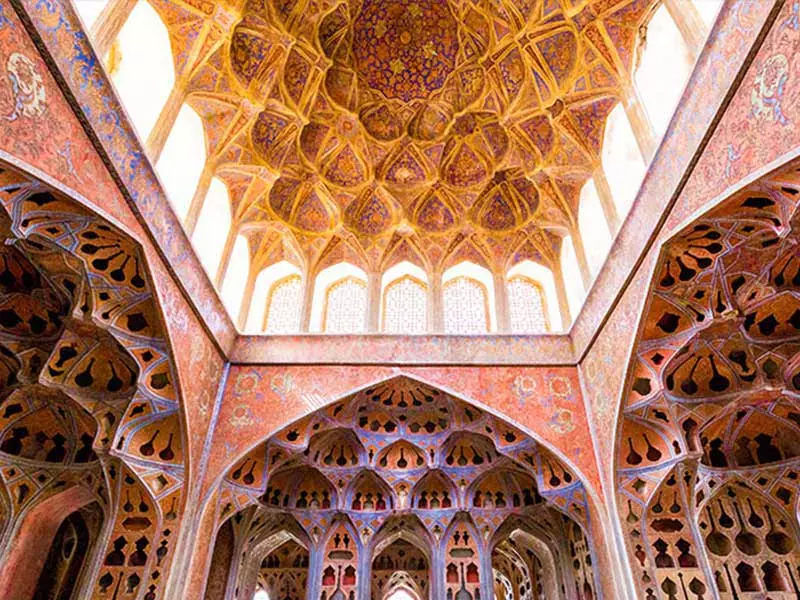
Location of Naqsh-e Jahan Square
Naqsh-e Jahan Square, also known as Imam Square, is situated in the north of Isfahan, at the heart of its historical attractions. The square is bordered by Hafez Street to the east and Sepah Street to the west, serving as the main entry routes to the square. Sepah Street runs perpendicular to Zayandeh Rud, and due to the presence of parking facilities at the street’s entrance to the square, it experiences high traffic. From Esfahan Street, behind the kitchen, and all parallel alleys, one can easily walk to the square.
The Naqsh-e Ali Square (current Imam Ali Square) is located in the northeast of Naqsh-e Jahan and is only two and a half kilometers away. Naqsh-e Jahan Square encompasses three main axes: the first axis is north-south, connecting Imam Mosque to Qeysarieh Gate. The second east-west axis includes Imam Mosque and the Ali Qapu Palace. The third axis, east-west along the Forty Columns Palace to the buildings that have now been completely demolished, was prominent in the past. Today, only limited historic structures remain along this axis, with notable examples being the Forty Columns Palace and the Eight Paradises Palace.
Sights of Naqsh-e Jahan Square
Each of the historical buildings erected in this square symbolized urban life, social cohesion, and national unity. The Jameh Abbasi Mosque or Shah Mosque on the southern side of the square was constructed as a social center for the city and served large gatherings during various occasions. The Sheikh Lotfollah Mosque on the eastern side functioned as a religious center, while the Ali Qapu Palace on the western side was the governmental center. The Qeysarieh Portal, another historical structure on the northern side of Naqsh-e Jahan Square, was an essential economic hub for the city.
The perimeter of the square is covered with historical chambers, now the main center for selling Isfahan’s handicrafts. The restoration of the old chambers of Naqsh-e Jahan Square has been carried out in recent years to preserve the art and promote the handicraft industry of the city. The two ancient Chogan gates are also historical remnants of this square. In this section, we will introduce these prominent historical buildings.
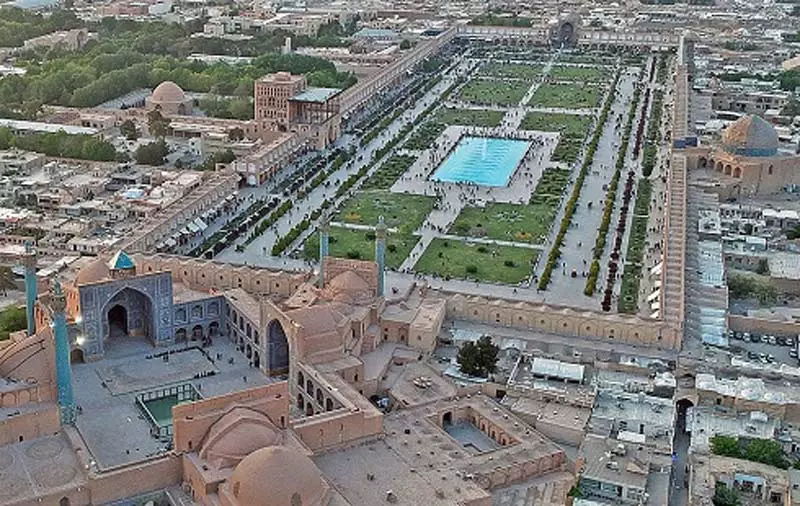
Imam Mosque (Masjed-e Imam)
Imam Mosque in Isfahan is the most significant historical mosque that has survived from the Safavid era. Construction of this structure began in 1020 AH, and its decorations were completed during the reign of Shah Suleiman. The architect behind this masterpiece was the prominent artist Ali Akbar Isfahani, and the inscriptions on its portal were done by the renowned Safavid calligrapher Alireza Abbasi. Various artworks and inscriptions by other distinguished artists can also be found in different parts of the mosque.
Imam Mosque is an exemplary piece of Safavid architecture, with its minarets and domes adorned with highly artistic tilework. The echoing sound under the dome is a distinctive feature of Imam Mosque. In the past, this mosque was known by names such as Shah Mosque, Great Abbasid Mosque, and Sultan’s Mosque.
Ali Qapu Palace
Ali Qapu Palace, located on the western side of Naqsh-e Jahan Square, is a structure covering an area of approximately 1800 square meters with six stories. Prominent features of this palace include beautifully decorated floors, sound reflection in the palace’s entrance, a stunning reception hall, and its main music hall. The palace houses 53 rooms for rest, holding meetings, the royal residence, and hosting ambassadors and guests. The foundation of the Mobarakeh Palace’s architecture is based on sturdy wooden pillars, and this beautiful building is still undergoing restoration and reconstruction.
Sheikh Lotfollah Mosque
One of the most beautiful historical mosques globally is Sheikh Lotfollah Mosque in Isfahan. Built by the order of Shah Abbas I for his private use, the mosque is situated on the eastern side of Naqsh-e Jahan Square. During the Qajar rule, the main building and decorations of Sheikh Lotfollah Mosque suffered significant damage, but Reza Shah Pahlavi initiated its reconstruction. The construction of its 32-meter dome took 17 years, and the tilework on the mosque’s dome is the result of its reconstruction in 1315 AH. Unlike other Safavid-era mosques, Sheikh Lotfollah Mosque does not have a courtyard or minarets. The inscriptions, adorned with the exquisite calligraphy of Thuluth by the famous calligrapher Alireza Abbasi, showcase themselves on the portal of this building.
Qeysarieh Portal
Qeysarieh Portal is situated on the northern side of Naqsh-e Jahan Square and serves as the entrance gate to the traditional and famous Isfahan Bazaar. The third floor of this bazaar was formerly a nakarehkhaneh (a place announcing the time with music at different times of the day). This part of the Qeysarieh Bazaar was demolished during the Qajar period. The Qeysarieh Portal consists of four secondary gates and one main entrance gate. In 1340, the pool in front of this portal was transformed into a garden but has since been revitalized. Due to its resemblance to its counterpart in the city of Qeysarieh, the portal was given this name. Notable remnants in this historical structure include paintings by Reza Abbasi, the Hoor Mazra opposite the portal, and the clock of the Orange Castle, which are memorabilia of the conquest of Hormuz Island during the Safavid era.
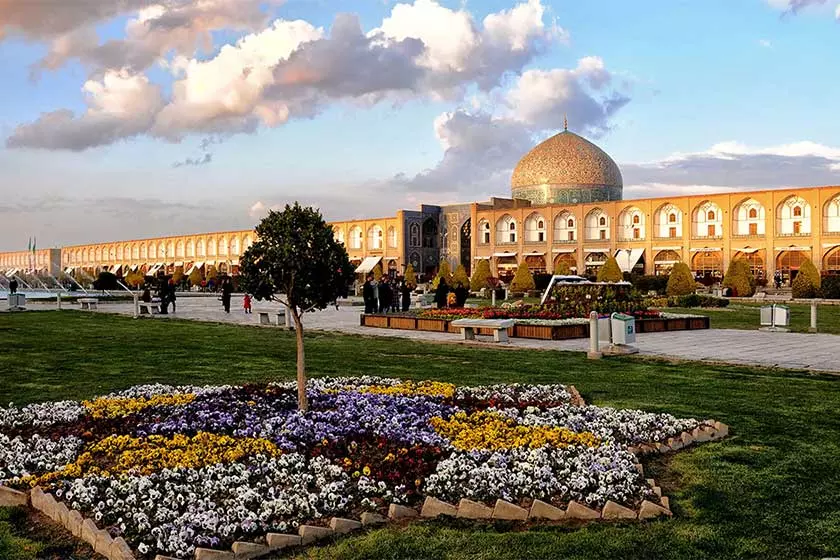
Qeysarieh Portal is located on the northern side of Naqsh-e Jahan Square. Over time, many historical buildings and monuments around this square have disappeared. Numerous suffered extensive damage due to the negligence of incompetent governments, especially during the Qajar period. Among the significant losses on this square are the 110 Spanish cannons as spoils from the conquest of Hormuz, the 40-meter-high Qapu pole in the center of the square, and a building housing a European clock. In the vicinity of Sheikh Lotfollah Mosque, Khwaja Malik School once stood but was completely demolished during the Qajar era. Two marble columns from Persepolis were brought to Naqsh-e Jahan Square in the past; today, one is kept in Chehel Sotoun Palace, and the other is displayed in the Museum of Ancient Iran.
What to Do in Naqsh-e Jahan Square?
When traveling to Isfahan, one of the best places to spend a memorable day is Naqsh-e Jahan Square. This historical square has numerous attractions equivalent to an entire city. To fully explore the area and enjoy all its amenities and sights, you may need to allocate a few days. The view of the square becomes exceptionally beautiful during different times of the day. The architectural illumination of historical buildings in Naqsh-e Jahan turns it into a captivating site at night. In this section, we will introduce you to some of the recreational activities during your visit to this square.
Explore Historical Attractions
Naqsh-e Jahan Square is one of the most important tourist attractions in Isfahan, and visiting its historical landmarks is highly fascinating for history enthusiasts. Allocating one or more days to visit these structures is recommended. The artistic artifacts preserved on the portals of these buildings and the historical objects inside them are of great importance. Each of these structures has guides providing information about the specific building and answering your questions. Spending a considerable amount of time in these historical buildings will take you deep into history, creating unforgettable memories.
Shop and Buy Souvenirs
Qeysarieh Bazaar in Naqsh-e Jahan Square is one of the best shopping centers in Isfahan. Common products in this bazaar include Isfahani handicrafts, carpets, copperware, and dried fruits. Isfahan Grand Bazaar is also located near Qeysarieh Bazaar, and both are covered bazaars. The prices of goods in these bazaars are reasonable. The chambers around the square also offer a wide variety of Isfahani handicrafts, but their prices may be higher than those in Qeysarieh and the Grand Bazaar.
Enjoy Walking and Horse Carriage Rides
The beautiful flower beds and turquoise pools with high fountains make the square a delightful area. You can spend a long time admiring this colorful space and take a leisurely stroll. Numerous benches in different parts of the square are provided for tourists to rest. You can sit for a while to alleviate fatigue and enjoy the beauty of your surroundings.
In various parts of the square, there is an opportunity for carriage rides. However, during peak tourist seasons, you might have to wait a bit for a carriage ride. Riding in a carriage around the square and witnessing the attractions is a delightful experience.
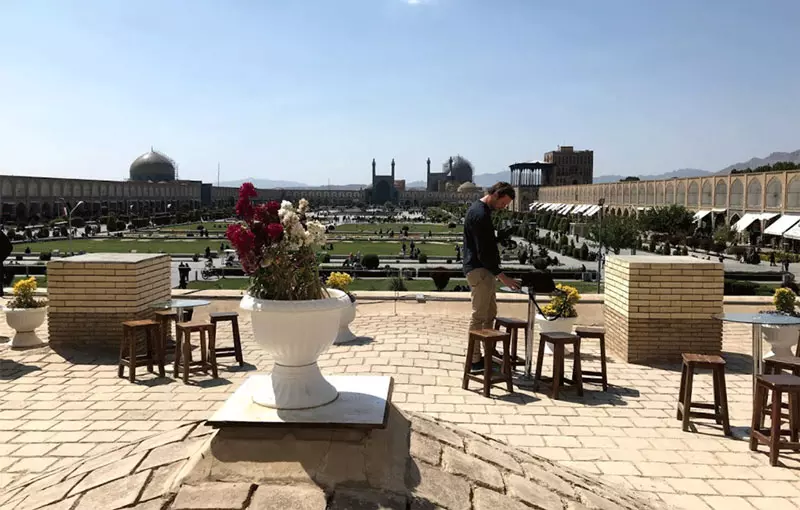
Visit Cafés and Restaurants in the Square
Around Naqsh-e Jahan Square, you can find a variety of delicious foods. From various snacks and desserts, such as cotton candy, to traditional dishes like Ash Reshteh (noodle soup) and Fereni (a type of pudding), as well as local favorites like Baghlava (a sweet pastry) and Doogh (yogurt drink), are available in the shops around the square. Dezi Saray Chah Haj Mirza offers a range of traditional dishes in a very traditional and pleasant setting. Qeysarieh Gallery Café, with a beautiful view of the square, and Hooger Traditional Café, decorated with traditional and historical elements, are among the best options for café hopping. The interior of Namaakdaan Café Restaurant and Shorbat Saray Roozegar is also very interesting. These traditional cafés are adorned with antique and vintage items. After exploring Naqsh-e Jahan Square, enjoying a fragrant and traditional beverage in these cafés is an unforgettable experience.
Don’t Forget Photography
Capturing beautiful images of this remarkable square will immortalize your travel memories. The historical buildings, scenic views, traditional cafés, sunset landscapes, and the beautiful nighttime illumination of the square all make excellent subjects for capturing memorable photographs.


